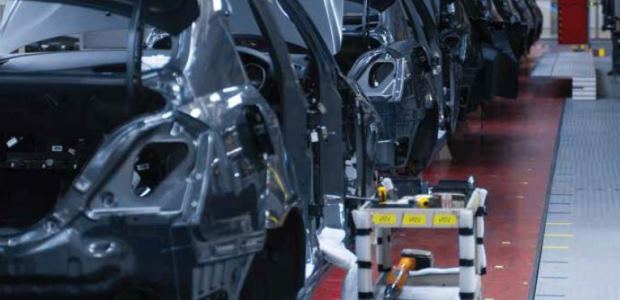
Training workers is vital in making sure the PPE is doing its job in protecting the users.

Advances in passive hearing protection improve comfort, fit, and function.

Understanding what the rules are is only half of the battle with noise. The other half is assessing noise levels and utilizing effective controls.
The four finalists for the 2019 Safety Innovation Awards are the Francis Manufacturing Company, J&R Farms, TERYDON Inc., and Yoder Drilling & Geothermal Inc.

WHO is recommending that governments and manufacturers adopt the voluntary WHO-ITU standard for the manufacture and use of personal audio devices.
OSHA cited the company for a lack of machine guarding on several pieces of equipment, for failing to implement a program to inspect mechanical power presses and correct unsafe conditions, and for failing to develop specific procedures to verify hazardous energy was controlled.
"Hearing loss is a significant public health issue, especially as individuals age," said Dr. Malvina Eydelman, M.D., director of the Division of Ophthalmic, and Ear, Nose and Throat Devices at FDA's Center for Devices and Radiological Health. "Today's marketing authorization provides certain patients with access to a new hearing aid that provides them with direct control over the fit and functionality of the device."

A key to ensuring effective protection is fit testing. Fit testing evaluates noise and provides workers an accurate reading of their hearing protection effectiveness.

Modern noise dosimeters are small, lightweight, feature multiple virtual instruments, and have many useful options to better describe the complete hazard during the worker's shift.
OSHA has proposed penalties of $199,183 to the company for two repeated and 14 serious safety violations.

Hearing test data collected by British Columbia employers in the oil and gas drilling sector between 2012 and 2017 show that the percentage of workers who showed signs of noise-induced hearing loss (NIHL) has increased by 12 percent over those five years, from 33 percent in 2012 to 45 percent in 2017, according to WorkSafeBC.
The partners will develop safety and health training programs and procedures; identify and address common construction hazards, such as falls, electrical, silica, noise, and carbon monoxide exposure; and encourage workers to participate in employers' safety and health programs.
OSHA has issued $370,358 in proposed penalties to Vigor Marine Inc. and cited the company for 16 willful and serious violations following an inspection at the shipbuilder's Portland, Ore., facility.
The Safe-in-Sound Excellence in Hearing Loss Prevention Award™ started in 2008 through a partnership of the federal agency and the National Hearing Conservation Association. Now, the partnership includes the Council for Accreditation in Occupational Hearing Conservation (CAOHC).

Some ototoxic chemicals may exacerbate noise-induced hearing loss even though the noise level is below OSHA’s PEL, the document warns.
"Reducing workplace noise levels is critical not just for hearing loss prevention – it may also impact blood pressure and cholesterol," said NIOSH Director Dr. John Howard, M.D. "Work site health and wellness programs that include screenings for high blood pressure and cholesterol should also target noise-exposed workers."
"We are just now beginning to understand the impact that hearing loss can have on the lives of older adults," said Dr. Frank Lin, who heads the new center. "Amazingly, there is a dearth of public health research that examines this area and that is geared towards developing solutions and policies needed to mitigate these effects."
"There is growing concern among occupational health and safety professionals that ototoxicant-induced hearing loss may go unrecognized since the measure for hearing loss does not indicate the cause," the document states. "For example, audiometric tests are powerful tools that show hearing impairments (i.e., threshold shifts); however, they do not differentiate between noise and ototoxic causes."

Using sound mapping software rather than measurements means you can predict future noise levels and take pre-emptive steps to control the noise.
When researchers examined the industries, they found as many as 36 percent of noise-exposed workers have hearing loss. They also found workers in the aquaculture and logging industries to be at higher risk for hearing loss. This group remains one of the industrial sectors with the highest hearing loss risk.